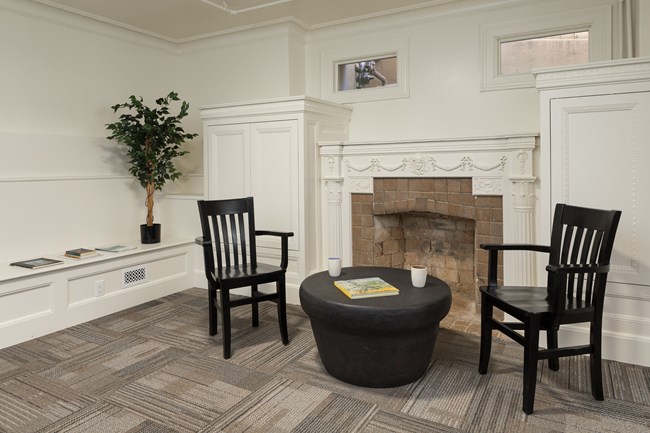Last updated: November 16, 2022
Article
Case Study: Cambridge Apartments, Seattle, Washington

William Wright Photography

William Wright Photography
History and Context
The Cambridge Apartments are housed in a Classical Revival-style apartment building in the First Hill neighborhood of Seattle, Washington. Built in 1923, the L-shaped, reinforced concrete building is clad in red brick, stucco, and terra cotta.
The building was designed by architect Sherwood Ford, known for many prominent commissions in Washington State. It was Seattle’s first concrete high-rise apartment building and was constructed during a period of dramatic growth when housing was in great demand. Once towering over downtown, the ten-story structure represented the city’s ambition and ability to urbanize in a vertical direction.
The Cambridge Apartments building is individually listed in the National Register and historically significant for its connections to the broad patterns of development and growth of the city. Designed as an apartment-hotel, it was an innovative housing type that became popular in the 1920s, providing both tourists and long-term residents the privacy and space of an apartment with hotel-like amenities, including a concierge, a radio room where residents gathered to listen to the radio, and a tearoom.
Scope of Rehabilitation
For nearly 100 years, the Cambridge Apartments remained mostly unaltered. In December 2016, a major rehabilitation was initiated to convert the building into affordable housing. The rehabilitation included repair of the red brick, stucco, and terra cotta on the exterior and installation of new windows. On the interior, asbestos had to be abated first before other work could begin. That work included installation of new plumbing and HVAC systems and a new fire-alarm system. The existing elevators were modernized to meet current code requirements. The 157 apartments were updated while retaining the character-defining features and spaces that are unique to this historic apartment-hotel. The kitchens and bathrooms were refurbished with new energy-efficient appliances and fixtures, and several apartments were modified to be accessible units. The project included seismic and life safety upgrades that brought the building up to modern sustainability standards. The distinctive lobby and the radio room were also restored on the interior.
Role of the Historic Tax Credit
All financing sources were essential to this project. Due to a shortage of affordable housing in Seattle, available public funds are primarily used for new construction projects. The $5,083,958 in equity generated by the Federal Historic Tax Credit filled a financing gap without which the creation of 157 affordable housing units would not have been possible.
Impact to the Community
When the Cambridge Apartments building was constructed in 1923, it represented the dramatic economic growth of the first two decades of the 20th century through a large-scale housing type. In Seattle, the need for affordable housing continues to grow due to rapid population growth and rising housing costs. That need has often resulted in the demolition of smaller historic apartment buildings to erect larger, new ones. The successful conversion of the Cambridge Apartments illustrates how historic preservation and rehabilitation can be used to meet the demand for affordable housing. The rehabilitated Cambridge Apartments provides affordable housing, in a location that is convenient to the city’s financial, government, hospital, and education job centers, by serving households earning below 50% to 60% of area median income and individuals who qualify for Section 8 housing.
Learn More
Fiscal Year 2019 Highlights and Reports
- Federal Tax Incentives for Rehabilitating Historic Buildings Annual Report for Fiscal Year 2019
- Annual Report on the Economic Impact of the Federal Historic Tax Credit for Fiscal Year 2019
Additional Case Studies
- Case Study: St. Rose de Lima Church Complex (New Orleans, Louisiana) The rehabilitation of this historic complex, including a church and two schools, provides new homes for a theater company, social justice organizations, dozens of micro-entrepreneurs, and a charter school. The tenants in the rehabilitated buildings and the services they provide created new jobs and draw visitors who have helped to revitalize the surrounding area.
- Case Study: Robinson Theater (Clarksburg, West Virginia) The Robinson Grand Performing Arts Center attracts over 120,000 visitors to 250 events a year in Clarksburg, West Virginia. The impact of the rehabilitation of the historic theater has been a catalyst for new economic development in the area, and increased local tax revenues can be attributed to increased foot traffic in and around the theater.
- Case Study: Hale Bathhouse (Hot Springs, Arkansas) The Hale Bathhouse is the oldest bathhouse on Bathhouse Row in Hot Springs National Park. Its rehabilitation into Hotel Hale was made possible with a long-term lease from the National Park Service.
